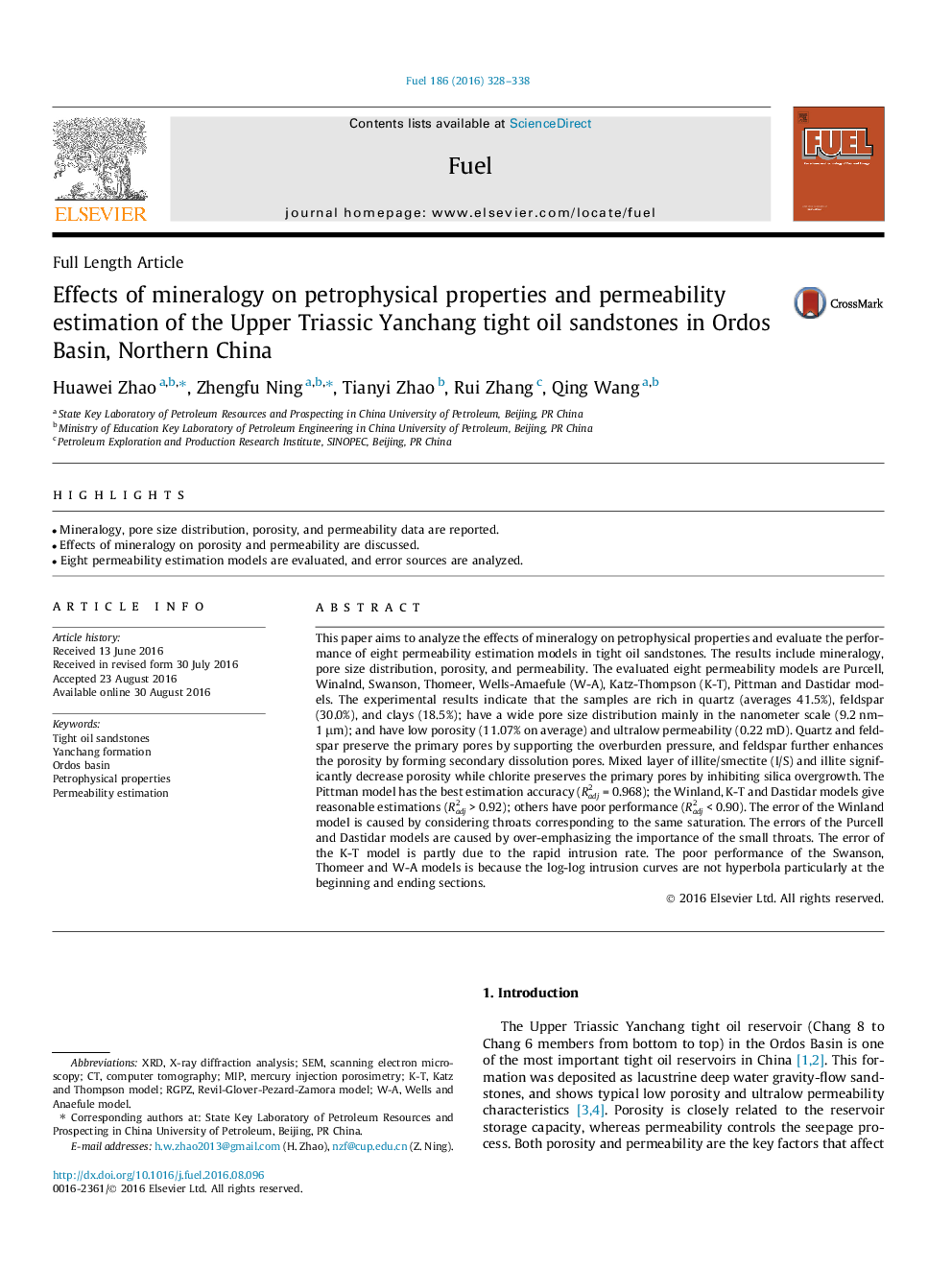| کد مقاله | کد نشریه | سال انتشار | مقاله انگلیسی | نسخه تمام متن |
|---|---|---|---|---|
| 6476081 | 1424978 | 2016 | 11 صفحه PDF | دانلود رایگان |
- Mineralogy, pore size distribution, porosity, and permeability data are reported.
- Effects of mineralogy on porosity and permeability are discussed.
- Eight permeability estimation models are evaluated, and error sources are analyzed.
This paper aims to analyze the effects of mineralogy on petrophysical properties and evaluate the performance of eight permeability estimation models in tight oil sandstones. The results include mineralogy, pore size distribution, porosity, and permeability. The evaluated eight permeability models are Purcell, Winalnd, Swanson, Thomeer, Wells-Amaefule (W-A), Katz-Thompson (K-T), Pittman and Dastidar models. The experimental results indicate that the samples are rich in quartz (averages 41.5%), feldspar (30.0%), and clays (18.5%); have a wide pore size distribution mainly in the nanometer scale (9.2 nm-1 μm); and have low porosity (11.07% on average) and ultralow permeability (0.22 mD). Quartz and feldspar preserve the primary pores by supporting the overburden pressure, and feldspar further enhances the porosity by forming secondary dissolution pores. Mixed layer of illite/smectite (I/S) and illite significantly decrease porosity while chlorite preserves the primary pores by inhibiting silica overgrowth. The Pittman model has the best estimation accuracy (Radj2 = 0.968); the Winland, K-T and Dastidar models give reasonable estimations (Radj2 > 0.92); others have poor performance (Radj2 < 0.90). The error of the Winland model is caused by considering throats corresponding to the same saturation. The errors of the Purcell and Dastidar models are caused by over-emphasizing the importance of the small throats. The error of the K-T model is partly due to the rapid intrusion rate. The poor performance of the Swanson, Thomeer and W-A models is because the log-log intrusion curves are not hyperbola particularly at the beginning and ending sections.
Journal: Fuel - Volume 186, 15 December 2016, Pages 328-338
